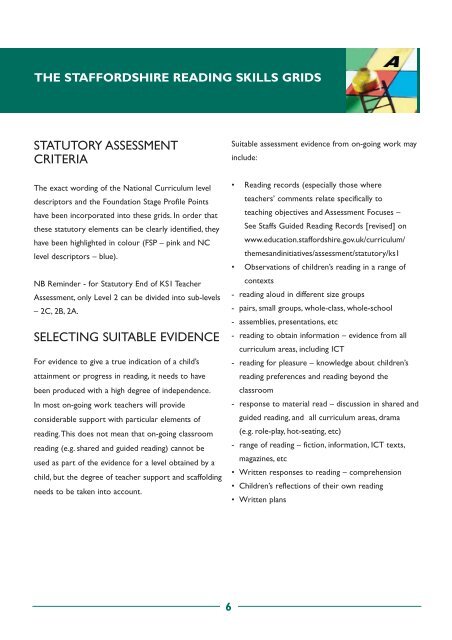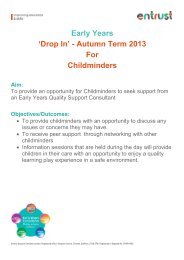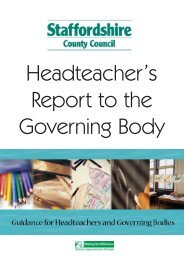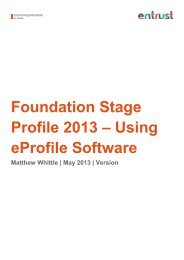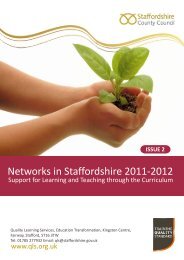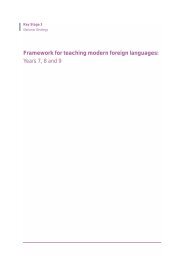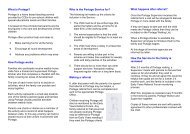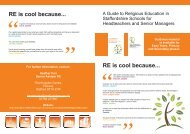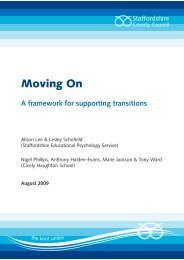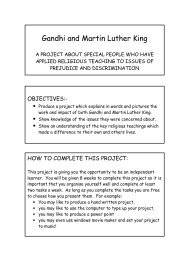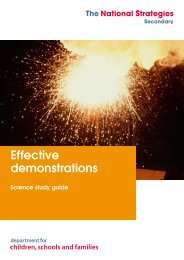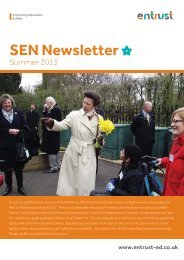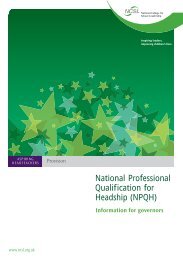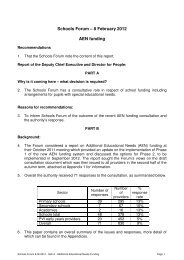Reading skills_save for pdf - Staffordshire Learning Net ...
Reading skills_save for pdf - Staffordshire Learning Net ...
Reading skills_save for pdf - Staffordshire Learning Net ...
You also want an ePaper? Increase the reach of your titles
YUMPU automatically turns print PDFs into web optimized ePapers that Google loves.
THE STAFFORDSHIRE READING SKILLS GRIDS<br />
STATUTORY ASSESSMENT<br />
CRITERIA<br />
The exact wording of the National Curriculum level<br />
descriptors and the Foundation Stage Profile Points<br />
have been incorporated into these grids. In order that<br />
these statutory elements can be clearly identified, they<br />
have been highlighted in colour (FSP – pink and NC<br />
level descriptors – blue).<br />
NB Reminder - <strong>for</strong> Statutory End of KS1 Teacher<br />
Assessment, only Level 2 can be divided into sub-levels<br />
– 2C, 2B, 2A.<br />
SELECTING SUITABLE EVIDENCE<br />
For evidence to give a true indication of a child’s<br />
attainment or progress in reading, it needs to have<br />
been produced with a high degree of independence.<br />
In most on-going work teachers will provide<br />
considerable support with particular elements of<br />
reading. This does not mean that on-going classroom<br />
reading (e.g. shared and guided reading) cannot be<br />
used as part of the evidence <strong>for</strong> a level obtained by a<br />
child, but the degree of teacher support and scaffolding<br />
needs to be taken into account.<br />
6<br />
Suitable assessment evidence from on-going work may<br />
include:<br />
• <strong>Reading</strong> records (especially those where<br />
teachers’ comments relate specifically to<br />
teaching objectives and Assessment Focuses –<br />
See Staffs Guided <strong>Reading</strong> Records [revised] on<br />
www.education.staf<strong>for</strong>dshire.gov.uk/curriculum/<br />
themesandinitiatives/assessment/statutory/ks1<br />
• Observations of children’s reading in a range of<br />
contexts<br />
- reading aloud in different size groups<br />
- pairs, small groups, whole-class, whole-school<br />
- assemblies, presentations, etc<br />
- reading to obtain in<strong>for</strong>mation – evidence from all<br />
curriculum areas, including ICT<br />
- reading <strong>for</strong> pleasure – knowledge about children’s<br />
reading preferences and reading beyond the<br />
classroom<br />
- response to material read – discussion in shared and<br />
guided reading, and all curriculum areas, drama<br />
(e.g. role-play, hot-seating, etc)<br />
- range of reading – fiction, in<strong>for</strong>mation, ICT texts,<br />
magazines, etc<br />
• Written responses to reading – comprehension<br />
• Children’s reflections of their own reading<br />
• Written plans


